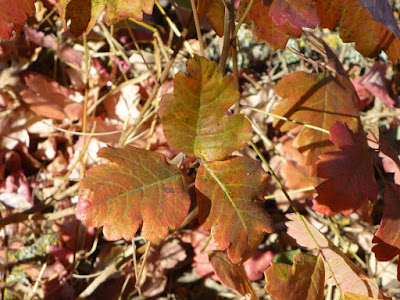 |
| Cosumnes River Preserve sign next to Franklin Boulevard |
 |
| Cosumnes River Preserve logo |
The
Cosumnes River Preserve is a valley oak and wetland preserve in
California's
Central Valley [1-4]. About 90% of the original grasslands and wetlands in the Central Valley have been lost by conversion mostly to agricultural land. At a preserve kiosk you will find the interesting information that there were times when one could travel by boat all the way from Sacramento to Bakersfield. Efforts are now taken to enlarge preserved areas and restore others to ensure lasting water supply, support migratory birds on the
Pacific Flyway and generally benefit recreation and agriculture.
 |
| Middle Slough |
Within the Cosumnes River Preserve hikers and birders can experience
wetland habitat and a band of
riparian oak forest turning into oak tree savanna with increasing distance from the Cosumnes river and adjacent sloughs. Boardwalks, interpretive panels, various loop trails and occasional benches invite visitors to stroll, hike and picnic at a scenic point. My favorite spot is the tree site with the
majestic valley oak (
marker 22 at the
River Walk Trail). Paddlers will enjoy the free-flowing, forest-lined river.
 |
| Cosumnes River |
As the Cosumnes River Preserve sign—shown in the top picture—indicates, this nature preserve is the result of a dedicated conservation partnership. Jordan Summers writes (page 90 in in [1]): “The Cosumnes River Preserve is managed by the Nature Conservancy, the U.S. Bureau of Land Management, Ducks Unlimited, the California Department of Fish and Game, the State Lands Commission, the California Department of Water Resources, Sacramento County, and private landowners.” Indeed a diverse partnership highlighting the importance and many interests in preserving wetland resources.
Getting to the Cosumnes River Preserve visitor center and trailheads
The preserve is located about twenty miles south from Sacramento. From Interstate 5 take the Twin Cities Road exit and turn left on
Twin Cities Road. Continue east for about one mile, then turn right on
Franklin Boulevard and go south. After passing the
Cosumnes River Preserve sign continue for another mile to find parking space and the visitor center at 13501 Franklin Blvd. on the left. No fees or permits. The trails start on the left side of the visitor center. Half-way between the Cosumnes River Preserve sign and the visitor center is another parking area off Franklin Blvd. to do the
Lost Slough Wetlands Walk. If your goal is the
Cosumnes River Walk, you want to start at the visitor center trailhead, cross the bridge and then turn right to walk south alongside Middle Slough. This path guides you to the loops with Cosumnes River views and access on both sides of the railroad tracks.
References and more to explore
[1]
Cosumnes River Preserve Trails in “
60 Hikes within 60 Miles, Sacramento” by Jordan Summers.
Menasha Ridge Press, Birmingham, AL,
2008.
[2] Sacramento County Regional Parks:
Consumnes River Preserve. Link:
www.regionalparks.saccounty.net/Parks/OpenSpaces/Pages/CosumnesRiverPreserve.aspx.
[3] The Nature Conservancy:
California >
Cosumnes River. Link:
www.nature.org/ourinitiatives/regions/northamerica/unitedstates/california/placesweprotect/cosumnes-river.xml.
[4] BirdWatching:
Cosumnes River Preserve, Galt, California. Link:
www.birdwatchingdaily.com/hotspots/30-cosumnes-river-preserve-galt-california/.


































